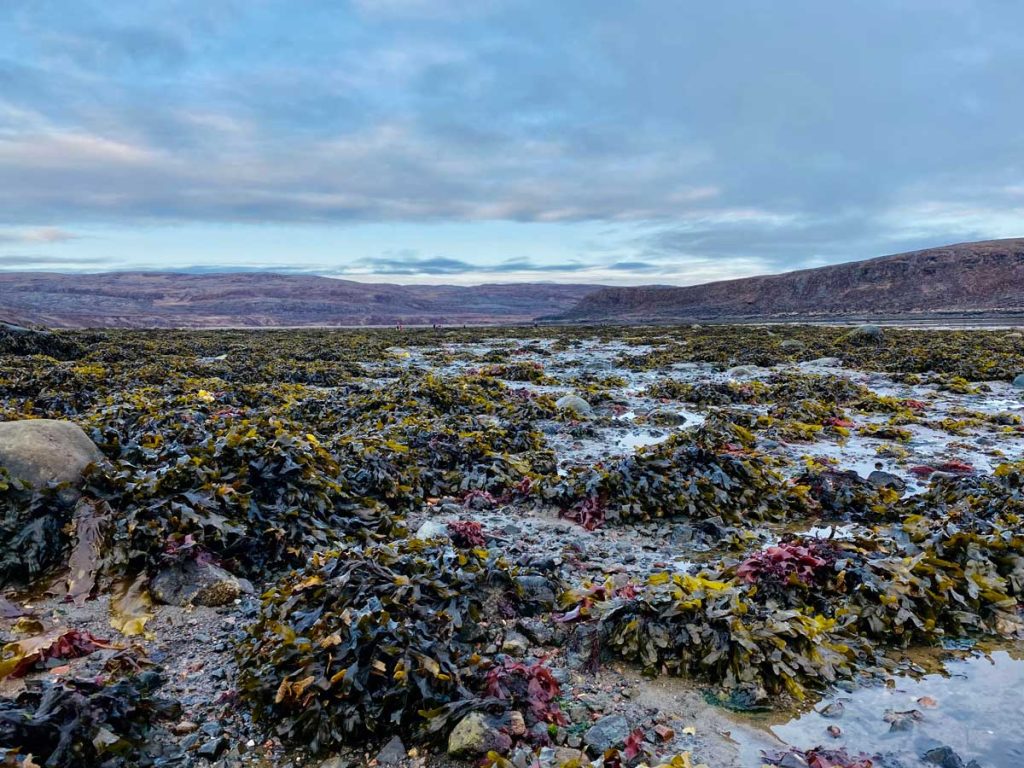Submission 2024
| Submitted by: | Stephanie Gerend |
| Department: | Epidemiology |
| Faculty: | School of Public Health |
This photo depicts a rocky tidal flat at low tide in Iqaluit, Nunavut, where the receding waters reveal a tapestry of diverse marine ecosystems. Hidden in the photo, just beneath the sand, lies a scattering of Arctic clams. They are hidden to the untrained eye, remaining invisible until looked upon with generations of passed down Inuit knowledge and skill. This image symbolizes what Inuit have described as always knowing to be true: the deep connection between people, food, and the environment, and the centrality of Inuit knowledge to these systems. A complex, and colourful network below the surface, where clams hold profound significance across physical, mental, social, cultural, and environmental realms. They embody the intricate interplay between humans and their surroundings which cannot be fully appreciated or understood by only looking at the surface with one’s own eyes.
Was your image created using Generative AI?
No.
How was your image created?
I travelled to Iqaluit, Nunavut in September 2023 to engage with Inuit communities and characterize how clams contribute to community wellbeing through the lens of Inuit knowledge. After the anticipation and preparation for the clam harvest, the tide finally reached its lowest height, and we began to disperse across the flat looking for signs of clams. The photo was captured at the water’s edge looking towards the back of the flat, where adults, and children began to fill their buckets with clams. Inexperienced, and with much to learn, I was far less fortunate in my clam harvest.

